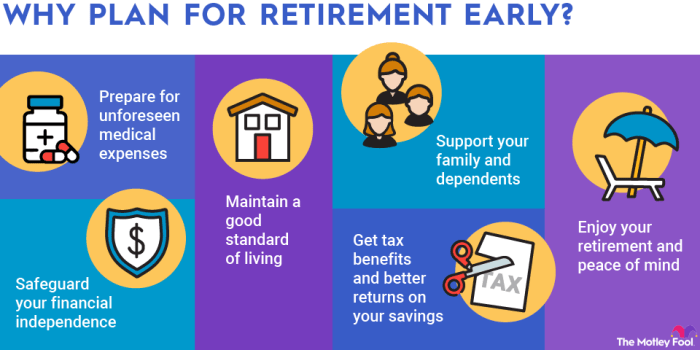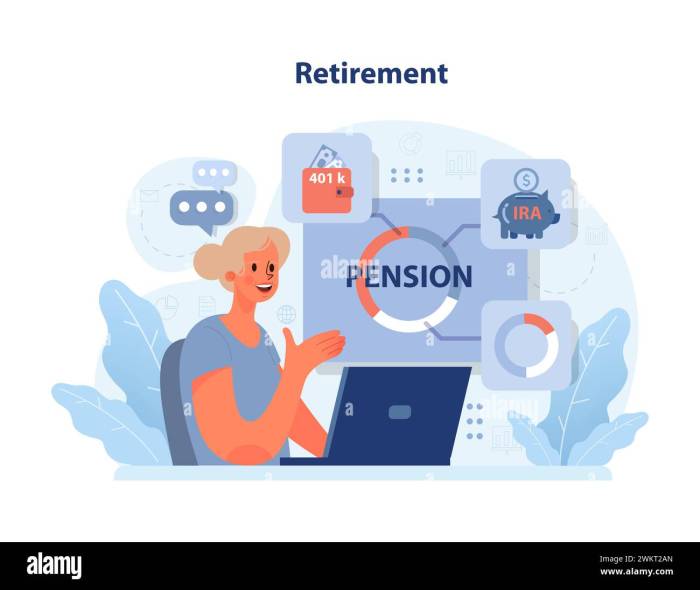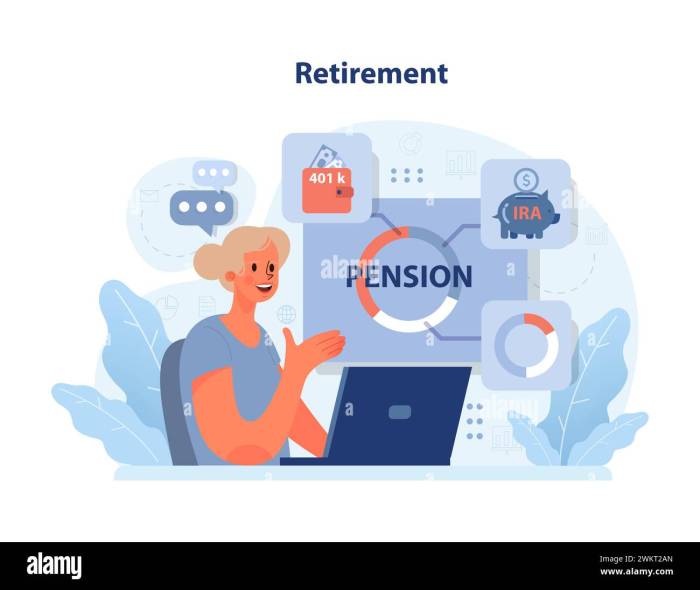Let’s be real, ladies: Retirement planning can feel like a whole other language. You’ve got bills, you’ve got dreams, and maybe you’re feeling like you’re just barely keeping your head above water. But here’s the deal: you don’t need a million bucks or a fancy financial advisor to secure your future.
This guide is your cheat sheet to financial freedom, breaking down the retirement game into eight easy-to-follow steps.
This isn’t about just surviving your golden years, it’s about thriving! We’re talking about creating a retirement that’s as vibrant and fulfilling as you are. From understanding your current financial situation to building a rock-solid foundation for your future, we’ll cover it all, one step at a time.
Understanding Your Financial Landscape
Retirement is a marathon, not a sprint, and it’s never too early to start planning. A personalized financial plan can help you stay on track and reach your financial goals, especially if you want to retire early or comfortably.
Tracking Your Income and Expenses
Tracking your income and expenses is a crucial first step in understanding your financial landscape. It helps you identify areas where you can cut back and save more for retirement.
- Use a budgeting app or spreadsheet to track your income and expenses. Many budgeting apps are available for free on your smartphone or computer. You can also use a simple spreadsheet to track your income and expenses.
- Categorize your expenses. This will help you identify areas where you are spending the most money. You can categorize your expenses by things like housing, food, transportation, and entertainment.
- Track your spending habits. This will help you identify areas where you can cut back.
Calculating Your Net Worth
Calculating your net worth is a good way to understand your financial position. It’s the difference between your assets and your liabilities.
- Assets are what you own, such as your home, car, investments, and savings accounts.
- Liabilities are what you owe, such as your mortgage, car loan, credit card debt, and student loans.
Your Net Worth = Assets
Liabilities
To calculate your net worth, create a list of your assets and liabilities and then subtract your liabilities from your assets.
Consulting with a Financial Advisor
A financial advisor can help you create a personalized financial plan for retirement, especially if you are unsure where to start.
- A financial advisor can help you set realistic financial goals.
- A financial advisor can help you develop a plan to reach your financial goals.
- A financial advisor can help you manage your investments.
Setting Realistic Retirement Goals

Retirement is a marathon, not a sprint, and setting realistic goals is crucial for navigating the journey. Just like you wouldn’t run a marathon without training, you can’t expect to retire comfortably without a solid plan.
Defining Short-Term and Long-Term Retirement Goals
Retirement goals are your roadmap to financial freedom. Short-term goals are stepping stones, while long-term goals are the destination.
- Short-term goalsare achievable within a few years. These could include paying off debt, building an emergency fund, or saving for a down payment on a vacation home.
- Long-term goalsare your big picture aspirations. They could include retiring at a specific age, achieving financial independence, or leaving a legacy for your family.
Strategies for Setting Realistic and Achievable Financial Targets
Setting realistic financial targets involves understanding your current financial situation and making informed decisions.
- Assess your current financial situation:Take stock of your assets, debts, and income. This will help you determine how much you can save and invest.
- Estimate your future expenses:Consider your housing costs, healthcare, travel, and entertainment. Remember to factor in inflation, which can significantly impact your retirement budget.
- Use financial planning tools:Online calculators and retirement planning software can help you estimate your savings needs and project your future financial situation.
- Consult with a financial advisor:A financial advisor can provide personalized guidance and help you develop a comprehensive retirement plan.
Different Retirement Lifestyles and Associated Costs
Retirement doesn’t have to be a one-size-fits-all experience. Your lifestyle choices will influence your retirement expenses.
- Downsizing:Moving to a smaller home or a lower-cost area can significantly reduce housing expenses. This can free up more money for travel, hobbies, or other interests.
- Travel and leisure:If you plan on extensive travel or indulging in expensive hobbies, you’ll need to factor in those costs.
- Healthcare:Healthcare costs can be significant in retirement. Consider long-term care insurance or other strategies to mitigate these expenses.
The Impact of Inflation on Retirement Planning
Inflation is the gradual increase in the price of goods and services over time. It can erode your purchasing power and make it harder to maintain your desired lifestyle in retirement.
To combat inflation, consider:
Girl, you know that feeling of wanting to retire early and sip margaritas on the beach? Yeah, that’s totally achievable! This amazing 8-step guide Download And Listen Here breaks down everything you need to know about financial freedom, even if you’re starting from scratch.
Get ready to ditch the 9-to-5 and live your best life, babe!
- Investing in assets that outpace inflation:Stocks, real estate, and other investments have the potential to generate returns that outpace inflation.
- Adjusting your retirement savings goals:Account for inflation when setting your retirement savings goals.
Building a Secure Financial Foundation
It’s time to build a financial foundation that’s as solid as a Beyoncé album release. This means taking charge of your money, making smart choices, and setting yourself up for a future filled with financial freedom.
Diversifying Investment Portfolios
Think of your investment portfolio as a carefully curated playlist of your financial life. You wouldn’t listen to just one genre of music, right? Similarly, a diversified portfolio means spreading your money across different types of investments, like stocks, bonds, and real estate.
This helps manage risk, so if one area of the market dips, you won’t lose everything. It’s like having a backup plan for your financial future, just in case something unexpected happens.
Maximizing Retirement Savings
Retirement savings are like the VIP section of your financial life – it’s where the good stuff happens. You want to make sure you’re maximizing your contributions to your 401(k) and IRA. A 401(k) is a retirement plan offered by your employer, while an IRA is a personal retirement account that you can set up on your own.
Retirement planning can feel like a total drag, but trust me, it’s like getting your nails done – a little bit of effort now pays off big time later. And, just like finding the perfect shade of polish, figuring out your financial future can be a journey.
Sometimes, you need a little guidance from a higher power, like in my own faith journey, which I shared on my blog My Faith Journey Getting To Know God. Finding that inner peace and strength can really help you tackle any challenge, even those retirement goals that feel like a mountain to climb.
So, ditch the fear and get ready to rock your financial future!
Both offer tax advantages, which means you can save more money for your future.
- Take advantage of employer matching:Many employers offer matching contributions to your 401(k), which means they’ll contribute a certain amount for every dollar you save. It’s like free money, so don’t miss out!
- Increase your contributions gradually:Don’t try to make a huge change overnight. Instead, increase your contributions by a small amount each year, like $50 or $100. This will help you get used to the change and make it less painful.
- Consider a Roth IRA:A Roth IRA allows you to contribute after-tax dollars, but your withdrawals in retirement are tax-free. This can be a great option if you think you’ll be in a higher tax bracket in retirement.
Managing Debt and Minimizing Financial Burdens
Debt can feel like a constant weight on your shoulders. It’s like a party you’re not invited to, but you keep getting the bill. The key to managing debt is to create a plan and stick to it.
- Prioritize high-interest debt:Focus on paying down debt with the highest interest rates first. This will save you money in the long run and help you get out of debt faster.
- Create a budget:Knowing where your money is going is essential to managing your debt. Create a budget that tracks your income and expenses. This will help you identify areas where you can cut back and free up more money to pay down your debt.
Planning for retirement can feel like a total drag, especially if you’re feeling like you’re starting from scratch. But, hey, don’t sweat it! There are tons of ways to build a solid financial future, even if you’re on a tight budget and don’t have a ton of time.
One awesome idea is to start a vending machine business – you can find all the secrets from the experts on how to launch a thriving business from scratch and generate passive income on autopilot in this complete guide.
So, whether you’re a total newbie or already have some financial savvy, remember that a little hustle and the right resources can make a huge difference in building your future!
- Negotiate with creditors:If you’re struggling to make your payments, don’t be afraid to reach out to your creditors. They may be willing to work with you to create a payment plan that fits your budget.
Establishing an Emergency Fund
Life is full of surprises, and not all of them are good. An emergency fund is like a financial safety net, protecting you from unexpected expenses, like a car repair or medical bill. It’s like having a secret stash of cash that you can access when you need it most.
“A good rule of thumb is to have 3-6 months of living expenses saved in your emergency fund.”
Navigating Retirement Income Sources
Retirement income is like a delicious three-course meal: you’ve got your appetizer (Social Security), your main course (pensions and savings withdrawals), and maybe even a sweet dessert (part-time work or other income streams). But before you dig in, you need to know how to plan and budget to ensure you’re getting the most out of each course.
Understanding Different Retirement Income Sources
Retirement income is a mix of different sources that work together to support your financial needs during your golden years. It’s not just about having one big pot of money; it’s about having a diversified strategy that covers your expenses and helps you maintain your lifestyle.
- Social Security:Think of it as the reliable appetizer that provides a base level of income. It’s a government program that provides monthly payments to eligible retirees, based on their earnings history. You can’t exactly choose your Social Security amount, but you can maximize it by working longer, delaying claiming your benefits, and strategizing your filing options.
- Pensions:If you’re lucky enough to have a pension, it’s like a guaranteed main course. It’s a traditional retirement plan that provides a regular income stream based on your years of service and salary. It’s often a reliable source of income, but it’s important to understand how it works and what your benefits will be.
- Savings Withdrawals:This is your main course – the savings you’ve diligently built up over the years. You can withdraw money from your 401(k), IRA, or other retirement accounts to supplement your income. The amount you can withdraw depends on your account balance, age, and tax implications.
Planning your retirement? Girl, you gotta start thinking about that ASAP! It’s never too early, even if you’re still rocking the “I’m broke and clueless” vibe. But hey, at least you’ve got your Bunco game on point, right? Grab some of those awesome Bunco Score Sheets for your next game night, and maybe you’ll win enough to kickstart your retirement fund! Seriously though, planning early is key.
Don’t wait until you’re 65 and wondering what happened to your money. Get your financial life in order, one Bunco win (and maybe some smart investments) at a time.
It’s crucial to have a plan for withdrawing money from your savings in a way that ensures it lasts throughout your retirement.
Maximizing Social Security Benefits
Think of Social Security as a game of strategy. You want to play it smart to get the most out of it.
- Delaying Benefits:You can claim Social Security as early as age 62, but your benefits will be reduced. If you wait until your full retirement age (FRA), you’ll receive your full benefit. And if you delay claiming until age 70, your benefits will increase by 8% for each year you delay.
So, if you can swing it, delaying claiming can really pay off.
- Strategic Filing Options:There are different filing strategies that can maximize your benefits, depending on your situation and your spouse’s. For example, if you’re married, you might consider filing for spousal benefits while your spouse works, or you might want to file for your own benefits first and then switch to spousal benefits later.
- Understanding Earnings Limits:If you’re still working and claiming Social Security before your FRA, there’s a limit on how much you can earn without reducing your benefits. If you exceed this limit, your benefits will be reduced for the months you earn above the limit.
Understanding Tax Implications for Retirement Income
Tax implications are a crucial part of retirement planning. It’s not just about saving money, it’s about saving money wisely, and that includes understanding how your retirement income will be taxed.
- Taxable Income:Most retirement income, including Social Security benefits, pensions, and savings withdrawals, is considered taxable income. This means you’ll need to pay taxes on it.
- Tax Brackets:Your tax bracket can vary depending on your income level. The higher your income, the higher your tax bracket. It’s important to understand how your retirement income will affect your tax bracket and plan accordingly.
- Tax-Deferred Accounts:Accounts like traditional IRAs and 401(k)s allow you to grow your savings tax-deferred, but you’ll pay taxes on the withdrawals in retirement. Roth IRAs, on the other hand, are funded with after-tax dollars, so your withdrawals in retirement are tax-free.
Creating a Sustainable Retirement Income Plan
A retirement income plan is like a roadmap to your financial future. It helps you stay on track and avoid getting lost in the maze of expenses and income streams.
- Estimate Your Expenses:It’s important to have a realistic idea of your monthly expenses in retirement. Consider your housing, healthcare, transportation, food, and entertainment costs. Don’t forget to factor in unexpected expenses like home repairs or medical bills.
- Calculate Your Income:Add up all your potential sources of retirement income, including Social Security, pensions, savings withdrawals, and any other income you expect to receive.
- Bridge the Gap:If your estimated expenses exceed your expected income, you’ll need to figure out how to bridge the gap. This might involve working longer, downsizing your home, reducing your expenses, or finding ways to generate additional income.
- Review and Adjust:Your retirement income plan isn’t set in stone. You should review it regularly and adjust it as needed to account for changes in your income, expenses, or tax laws.
Protecting Your Retirement Assets
You’ve worked hard to build your retirement nest egg, and now it’s time to make sure it’s protected. Think of this as a superhero suit for your financial future, shielding you from potential threats. This section explores strategies to protect your retirement assets from unexpected twists and turns, ensuring you can enjoy your golden years without financial worries.
Estate Planning
Estate planning isn’t just for the wealthy; it’s essential for everyone. It involves deciding who will inherit your assets and how they’ll be distributed after your passing. A well-crafted estate plan ensures your wishes are respected and helps avoid potential legal disputes or tax burdens on your heirs.
- Will:A legal document outlining how your assets will be distributed upon your death. It can be simple or complex, depending on your needs.
- Trust:A legal entity that holds assets and distributes them according to your instructions. Trusts can be beneficial for tax planning, asset protection, and managing assets for beneficiaries who are minors or have special needs.
Managing Financial Risks
Life throws curveballs, and it’s wise to have strategies in place to protect your retirement assets from unexpected events.
- Market Volatility:Diversifying your investment portfolio across different asset classes (stocks, bonds, real estate) can help mitigate the impact of market fluctuations.
- Unexpected Medical Expenses:Having adequate health insurance coverage is crucial. Consider supplemental health insurance, like a health savings account (HSA) or a high-deductible health plan (HDHP), to help cover out-of-pocket medical costs.
- Long-Term Care:Long-term care insurance can help pay for assisted living or nursing home care, which can be expensive. If you’re considering this, research the coverage and costs carefully.
Role of Insurance in Retirement Planning
Insurance plays a crucial role in safeguarding your retirement, providing a safety net against unforeseen events.
- Health Insurance:Essential for covering medical expenses, especially in retirement when healthcare needs tend to increase.
- Long-Term Care Insurance:As mentioned earlier, this insurance can help cover the costs of long-term care, which can be substantial.
- Life Insurance:Provides a financial safety net for your loved ones, helping them maintain their financial stability after your passing.
Safeguarding Against Scams and Fraud
Sadly, scammers often target older adults, hoping to exploit their vulnerabilities. Here are some tips to protect yourself:
- Be wary of unsolicited calls, emails, or letters:Legitimate companies rarely reach out in this way.
- Don’t give out personal information:This includes Social Security numbers, bank account details, or credit card information.
- Verify any suspicious requests:If someone asks for money or personal information, check with trusted sources like your bank or financial advisor.
Embracing a Fulfilling Retirement Lifestyle

Retirement isn’t just about kicking back and relaxing; it’s about creating a new chapter in your life, one filled with purpose, joy, and adventure. This is your chance to explore new passions, connect with loved ones, and live life on your own terms.
It’s time to design a retirement lifestyle that truly reflects your dreams and aspirations.
Maintaining a Healthy Lifestyle
Maintaining a healthy lifestyle is crucial for enjoying a fulfilling retirement. It allows you to stay active, engaged, and independent, enabling you to make the most of your golden years.
Physical Activity
Regular physical activity is essential for maintaining physical health and mental well-being. Aim for at least 150 minutes of moderate-intensity aerobic activity or 75 minutes of vigorous-intensity aerobic activity per week.
- Engage in activities you enjoy, whether it’s walking, swimming, dancing, gardening, or playing sports.
- Join a gym or fitness class to stay motivated and connect with others.
- Consider taking up a new sport or activity that challenges you mentally and physically.
Nutrition
A healthy diet is fundamental for maintaining energy levels, preventing chronic diseases, and supporting overall well-being.
- Focus on consuming plenty of fruits, vegetables, whole grains, and lean protein.
- Limit processed foods, sugary drinks, and unhealthy fats.
- Stay hydrated by drinking plenty of water throughout the day.
Social Engagement
Social connections are essential for mental and emotional well-being. Staying socially active can help prevent feelings of isolation and loneliness, which are common in retirement.
- Join clubs, groups, or organizations that align with your interests.
- Volunteer your time to a cause you care about.
- Spend time with family and friends, and make an effort to stay connected with loved ones.
Pursuing Hobbies and Interests
Retirement is an opportunity to rediscover old passions or explore new ones. Engaging in hobbies and interests can bring joy, purpose, and a sense of fulfillment to your life.
- Take up a new hobby like painting, photography, writing, or playing a musical instrument.
- Join a book club or attend lectures and workshops to expand your knowledge and engage your mind.
- Volunteer your time to a cause you care about, which can provide a sense of purpose and community.
Staying Mentally Active
Maintaining mental sharpness is crucial for overall well-being. Engaging in mentally stimulating activities can help keep your mind sharp and prevent cognitive decline.
- Read books, newspapers, or magazines.
- Solve puzzles, play games, or learn a new language.
- Take classes or workshops to expand your knowledge and skills.
Planning for Travel and Leisure Activities
Retirement is a time to explore the world and experience new things. Planning for travel and leisure activities can bring excitement and adventure to your life.
- Research destinations that align with your interests and budget.
- Consider joining a travel club or group to meet other travelers and share experiences.
- Plan for short trips and weekend getaways to break up your routine and create lasting memories.
Epilogue

So, ditch the fear and the overwhelm. This is your chance to take control of your future and write your own retirement story. Remember, you’ve got this! This guide is your ultimate roadmap to a financially secure and fabulous retirement, one that’s truly yours to create.
FAQ Overview
What if I’m already behind on my retirement savings?
It’s never too late to start! Even small contributions can make a big difference over time. Focus on what you can do now, and don’t let past mistakes hold you back.
How do I know if I’m saving enough for retirement?
There are online calculators and financial advisors who can help you determine a realistic savings goal. Aim for a comfortable retirement, but remember, it’s a marathon, not a sprint.
What if I don’t have a 401(k) or IRA?
There are other options available, such as Roth IRAs or individual investment accounts. Talk to a financial advisor to explore your choices.

